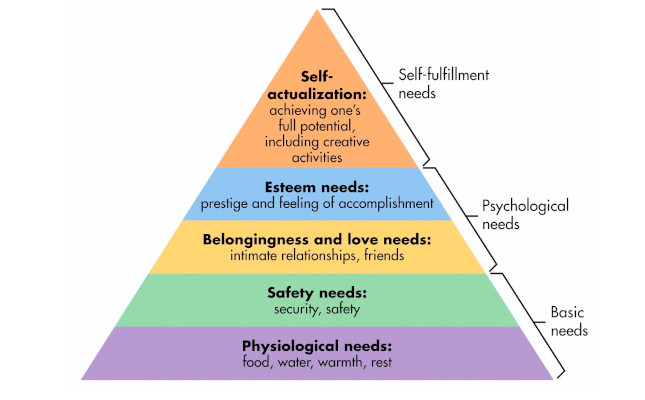Strategies To Improve Mental Wellbeing
Seller Motivational
Wellness is a Win
What’s up everyone! It’s Hana here. The wonderful folks over at Admin are amazing and are allowing me back once again to contribute to a blog. My last blog was almost a year ago. I joined All Things Worn (ATW) around May 2021 and was here for about 2 months, I left for almost a year, and came back in late April 2022. I’m hoping to be around for much longer this time around, I do love selling goodies during the hot summer months ;) Today I’m here to write about wellness for both buyers and sellers!
Wellness for Everyone!
Wellness is, well, to be well. Ok ok, that was a lot of “well”s, let me start over. Wellness is to be healthy, in all aspects of your life. Physical, mental, social, habitual, and spiritual. All the categories! I’ll be focusing on physical and mental wellness, with an emphasis on mental wellness, for this blog post.
Physical wellness comes from taking care of your actual body, which can mean a variety of things. Most commonly, we may hear that a good diet, regular exercise, and good sleep hygiene are key ways to take care of our physical health, and that’s true. There are other ways to help your body, too, though.
For me, a big one is to protect and nurture my skin, I’m always slathering on sunblock before I leave my house and slapping on that lotion before bed. Other common things I hear are limiting consumption of alcohol/drugs, keeping up to date on immunizations, listening to your body/pain (seeing a doctor when something concerning arises), wearing comfortable shoes, and using a good mattress.
Physical and mental health are often linked - two sides of the same coin. I mean, each of us is one creature, after all, it’s not like I can say “Hana is my brain, Hikara is my body!” Nah, I’m Hana Hikara, it’s all connected!
So, the first step in mental wellness is often to make sure your physical body is cared for. I work in healthcare, specifically mental health, and I’m always referring to Maslow’s hierarchy of needs:

Photo credit: wunderkindworld.com
Proposed by Abraham Maslow in 1943, the hierarchy of needs portrays the five levels of needs we can experience and achieve in our lifetimes. It is a widely used psychological idea that in order to move up in the pyramid/ladder, the bottom needs must be met.
So, now that your physical body is all shined up and ready to go, what’s next? How do we make sure the 3lb mound of pain nerve-less lump of fat in our skull keeps doing its job? Let’s look at safety needs, this is things like having shelter and financial security. It can also mean having emotional security, which is a good sense of who you are and general contentment regarding your life and person.
I have found it especially helpful to limit my time on social media in order to develop and maintain good emotional security. I often felt insecure and desperate on social media when I looked at all the posts showing “perfect” lives and was almost addicted to the likes and hearts I’d get on my posts. I taught myself that my self worth is determined by the engagement I got from social media, and that’s just not true, for me or anyone else.
Insecurity and vulnerability can come from other stressors too, I always advocate for some self-reflection about what/why is stressing you out and making you feel like you’re not enough. I won’t be delving deeper into Maslow’s hierarchy of needs, and instead, I’m going to shift gears into some basic things you can do to promote mental wellness.
Mental Wellness, it’s a Skill!
Let’s break this section further down into two parts: preventative and corrective.
Preventative will focus on things you can do to boost your already existing mental wellness, while corrective will look at some techniques that are commonly used to resolve and change unhealthy patterns that are negatively impacting one’s mental wellness.
Keep in mind that while I’ve organized these techniques and skills into categories, there are no hard distinctions and a preventative technique can easily be corrective and vice versa, depending on the context.
Preventative Techniques
- Mindfulness
This is a technique that has gained some traction and popularity in recent years and basically means to be conscious of what is happening right in the moment, to experience it without judgment.
A simple exercise I like to do is to close my eyes and “walk” myself up my body, starting from my feet. How do my feet/toes feel against the surface I’m resting on, is the pressure on my sole, toes, and heel, evenly distributed? Up to my face/head, noting any sensations in between. Any pain, discomfort, or pleasure along my body? Against where I am feeling pressure from the chair/bed/wall, etc.? What do I hear, do I smell anything? This simple exercise takes less than 3 minutes usually and just helps me take a moment to take a break and ground myself. - Stay realistic
Managing expectations is helpful, and my hot take for this point is that there is no evidence that karma/goodwill exists and that things happen randomly.
Good things happen to bad people, bad things happen to good people. The good karma I get from doing something good exists in the form of instant gratification as I feel good doing a good deed like donating to a charity or helping a friend out. Being realistic about what to expect helps me stay in control and prevent unnecessary disappointment. - Surround yourself with positivity
This can mean ensuring that your social circle is free from toxic people and unhealthy relationships/habits. This can also look like leaving notes of affirmation for yourself and setting reminders with messages of encouragement/reassurance. - Practice gratitude
My absolutely favorite coping skill! I do this every day and sometimes I have to reign myself back because I cross over into becoming complacent as I convince myself that there’s just already so much to be grateful for. I look at all aspects of my life, I consider what can improve and what is already good/meets expectations. There is always room for improvement, that I’m not denying, but there can also be many things to be grateful for, like a full belly, a good family, some extra spending money, etc..
Corrective Techniques
- Challenge negative thoughts
Sometimes we talk ourselves into a negative spiral and it encourages us to ruminate over thoughts that aren’t productive or are actually harmful. This can go well with the staying realistic point mentioned above, as sometimes our negative thoughts are overcritical of ourselves and unrealistic. We can also end up catastrophizing, which is when we expect the worst-case scenario and minimize the positives. - Allow for the gray area
Life is not black and white so oftentimes it’s not always 100% good or 100% bad. Even a bad situation can have good parts or silver linings, and good events can often have bad parts to them. Life is complex, and ignoring that can lead to confusion, anger, ignorance, and so on. - Journaling
This can be a helpful way to track your thought patterns, emotions, feelings, and behaviors to look for patterns. I simple prompt that I use when I experience a distressing event is:
Today I felt (emotion) when (trigger) happened. My first thought was ______. This thought is/is not realistic, because ______. I reacted this way: ______. Consequences of my reactions: _______.
So it might look something like: “Today I felt angry when my partner didn’t put his shoes on the shoe rack coming in like I had asked them to, many times. My first thought was that they didn’t love me because they didn’t care enough to follow through even though they agreed to. This thought is not realistic, because I know my partner loves me from all the other things they do for me. I reacted by asking him how his day was and found that he was really stressed out and forgot about our agreement to not leave shoes in front of the door.”
Real prompt from one of my journals, and I’m proud that I was able to (after a few entries!) change this negative/unrealistic thought because my first few prompts were “I yelled at him” or “I cried in the bathroom about it.” Gosh, that Hana was so unreasonable. - Seeking professional help
The contents of this blog should not substitute professional help and treatment. If you’re a student, your university may offer free/affordable counselling as part of your tuition. You can contact your health insurance to find in-network providers (I think this part is only applicable for our US folks, right? Our UK community members have free healthcare, right? I’m so envious…), or ask if providers offer a sliding scale fee/payment plan if paying for services is a barrier.
I tried to keep this blog on the shorter/quick read end, but ended up writing so much! I still didn’t even get to cover a fraction of what I wanted to! There are so many ways to stay safe and well, and I hope you’re able to find a routine and techniques that work for you. Thank you so much for reading, and look forward to more time with this community!
More From Our Blog

Navigating Panty Selling Whilst Battling a Chronic Health Condition
I may be Joy by name, but joy has certainly not always been my nature. In the past few years, I’ve fluctuated between various states of what you could call...
By Soleful_joy
Seller Sellers’ Perspective
Risk profiles in R.A.C.K. (RISK AWARE CONSENSUAL KINK)
In BDSM (bondage, discipline, submission, dominance, sadism, masochism) there are tons of acronyms for handy and easy understanding. However, there is much debate about how fitting the terms really are....
Seller BDSM Tips For Sellers Tips For BuyersLatest Blogs
A Seller's Guide to Selling Feet Pics Online
By Hayles
By Scarlettlips123
Mental Health as a Seller in the Sex Industry
By Lululiciousss
How Online Sex Work Helped Me Overcome Body Dysmorphia
By LexiSexy
Selling Fetish Content, It’s A Two-Way Street!
By Kinks_and_curves
View All Blogs
Follow Us
Keep in the loop with everything happening on All Things Worn.
Categories
Used UnderwearUsed Shoes
Used Hosiery
Used Clothing
Naughty Extras
Instant Content

